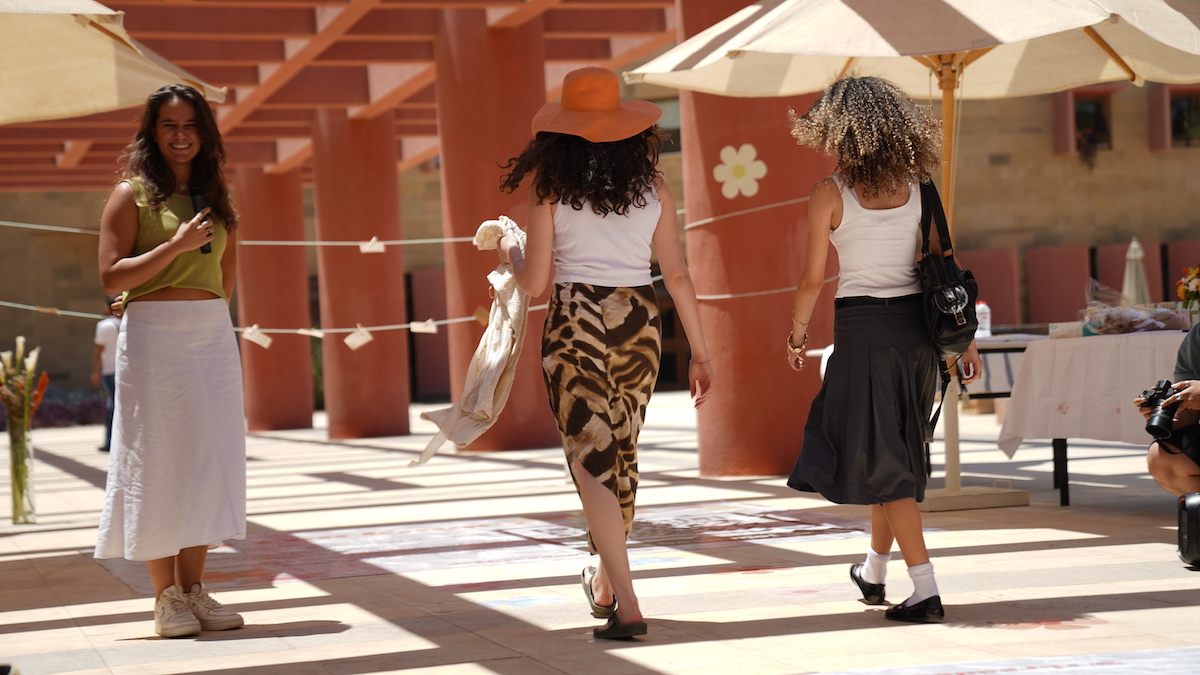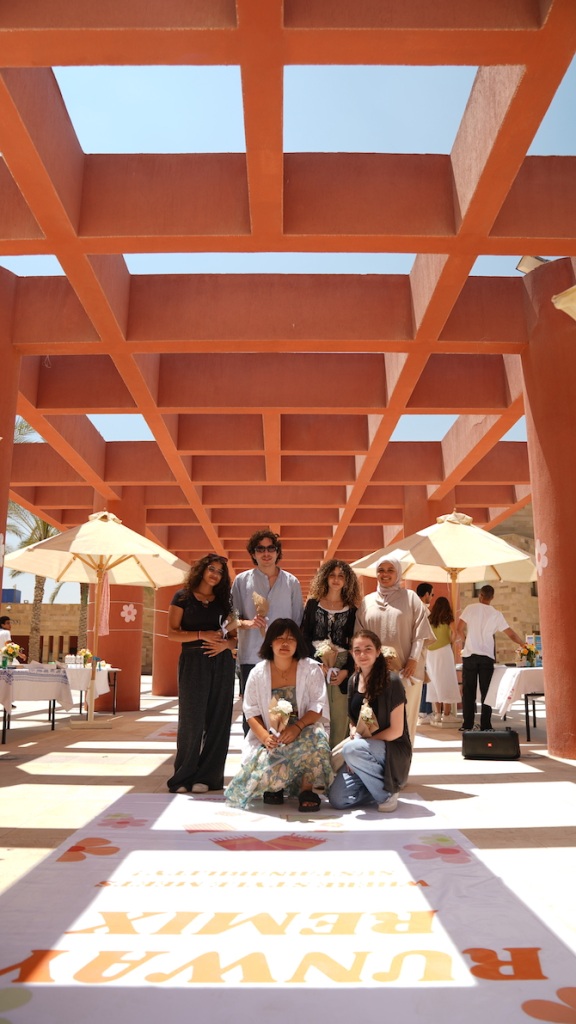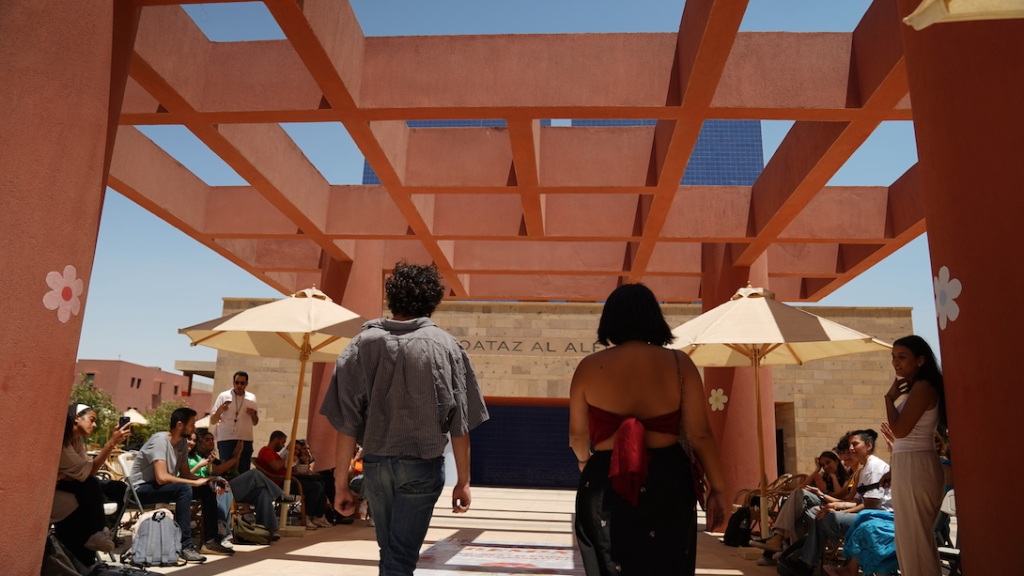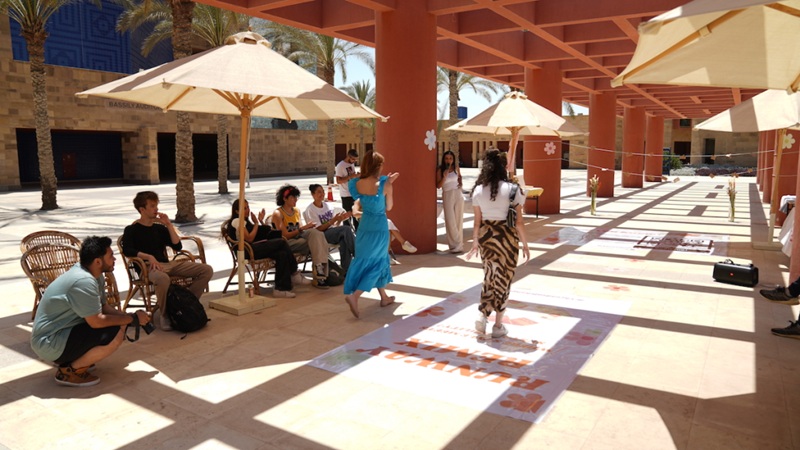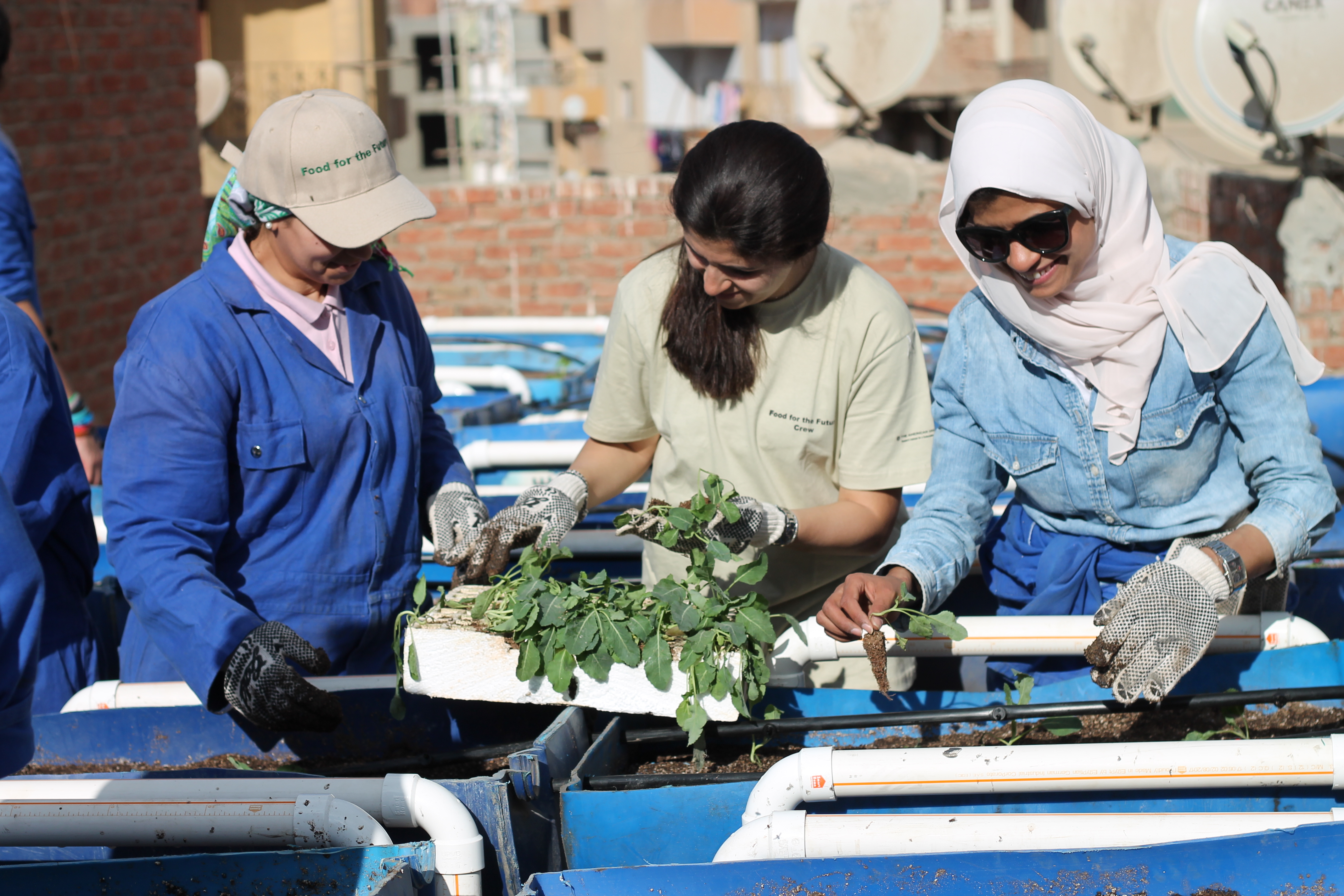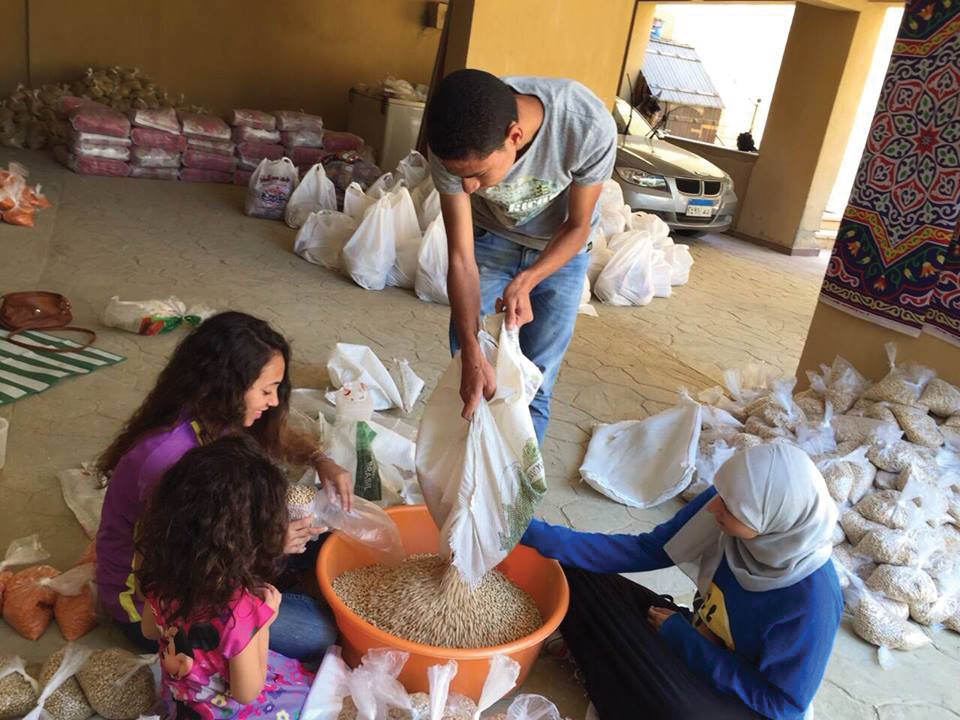Students talk among themselves outside Moataz Al Alfi Hall, seated in rows facing a carefully designated catwalk decorated with flowers and posters. The audience itself displays a variety of different styles, each student with a distinct aesthetic. When the models take the stage, the support is loud and inviting.
The MC takes the mic to let everyone know: "Welcome to Fashion Remix, a student runway show dedicated to showcasing fun, creative and sustainable style while raising awareness of the environmental impact of the fashion industry. Each participant will be modeling one piece of clothing, styled in five different ways."
Student models at the Runway Remix fashion show outside Moataz Al Alfi Hall at AUC New Cairo
While the bulk of the responsibility for the current climate crisis lies on the shoulders of fossil fuel firms, wealthy countries and consumers, the reality is that everyone suffers from the effects of climate change and benefits from taking the steps within our control -- which is what led communication and media arts majors Mariam Mikhail '24, Mirna Abdelbary '24 and Naira El Tabakh '24, to begin their project their closets and eventually host the runway.
"It's always frustrating that as an individual, you can't 'save the world' all at once," says Mikhail, part of the team behind Fashion Remix. "But starting off with yourself and taking the steps you can to be sustainable, including with your clothing, is going to seep into other areas of your life in an impactful way. Bit by bit, we'll get there."
As young people, we have a great responsibility, even just to ourselves, to pay attention to our environmental impact.

Why focus on the fashion industry? "It has a devastating environmental impact and is responsible for as much as 10% of global carbon dioxide emissions," the project's website reads. "Processes such as dyeing and synthetic materials are accountable for an immense amount of water pollution and the depletion of finite resources such as crude oil."
Beyond its environmental impact, the fast-fashion industry is notorious for poor labor practices and exploitation, which disproportionately impact developing countries where the factories are operated, the website reads.
The facts are sobering, but the group found that it was much easier to get people involved when the information was presented in an engaging and creative way. However, with fleeting trends and the high pressure to fit in by continuously buying new clothing, the team found it hard to gain traction with their peers. "Fashion means a lot to us. And to me personally, it is a form of self- expression," says Mikhail. "That's where we came up with the concept of making our project a bit of a competition, getting people to show off their creativity and become engaged in a different way. That's how the runway came into place."
The energy remained high during the event, with students hyping up their peers and participating in sustainability- focused intermissions while the models changed outfits. "It was fun to have an event that was centered on what we could do right instead of everything we do wrong because we all do a lot of negative things when it comes to the environment," said Victor Aubertin, a study-abroad student from France and one of the models at the event. "It's really cool to have these positive spaces where you can get creative and explore the alternatives to fast fashion."
Fashion is fun and a spectacle. It can be part of expressing identity, as Mikhail points out. Most importantly, it's one of the many ways younger generations can get immediately involved in sustainability. "I really take it with a heavy heart when humans dismiss any sort of environmental justice so easily," Mikhail reflects. "As young people, we have a great responsibility, even just to ourselves, to pay attention to our environmental impact.


